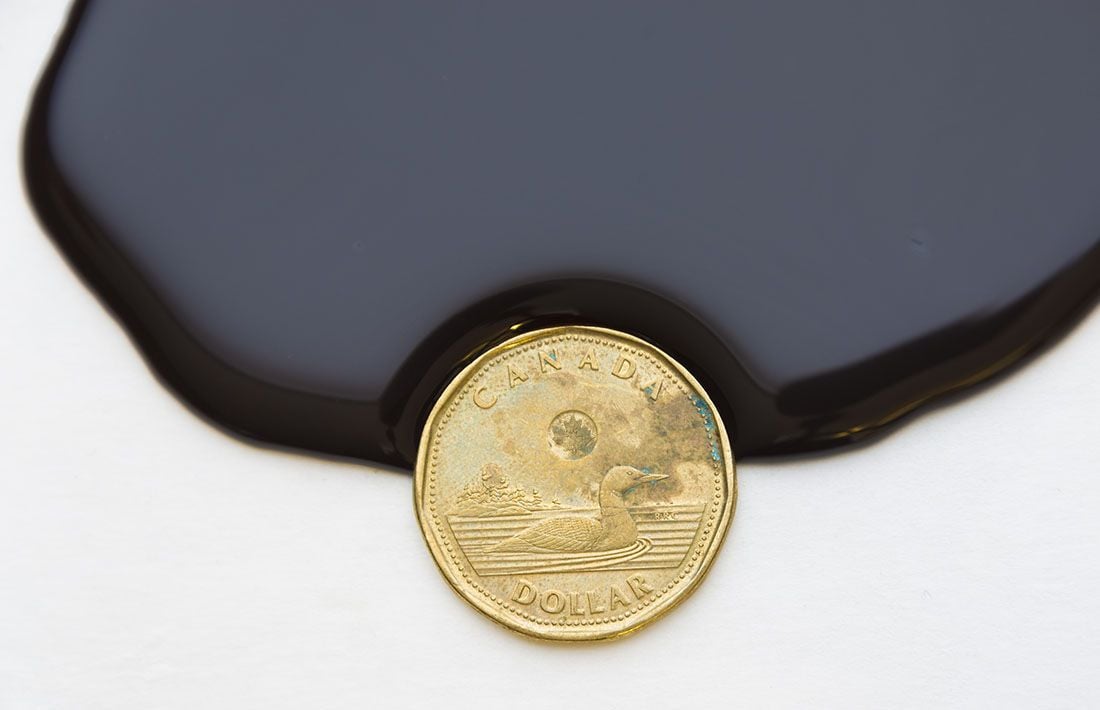Canadian Dollar "Worth More" says Desjardins
- Written by: Gary Howes
-

Image © Adobe Stock
The Canadian Dollar was one of 2021's star performers but has lost its flare in 2022, however analysts at Canadian bank Desjardins says it should be valued at higher levels.
In a new research note Desjardins says the Canadian currency "has some room to appreciate" noting it has now become undervalued relative to fundamental drivers.
"The Canadian dollar is currently trading at less than US$0.79," says Hendrix Vachon, Senior Economist at Desjardins. "However, some variables, such as the high price of oil and other commodities, suggest that it might be worth more."
The call comes as the Canadian currency struggles against some of its major counterparts: the Dollar to Canadian Dollar exchange rate is now up two-thirds of a percent in 2022 at 1.2712 (CAD/USD 1.7866).
The Pound to Canadian Dollar exchange rate is meanwhile up a percent in 2022 at 1.7272 and the Euro to Canadian Dollar exchange rate is at 1.4419, up half a percent for the year.
Of particular interest to Desjardins is a breakdown in the Canadian Dollar's relationship with oil prices, to which it has traditionally enjoyed a strong correlation.
Above: "For years, a very strong link existed between oil and the Canadian dollar" - Desjardins.
- Reference rates at publication:
GBP to CAD spot: 1.7253 - High street bank rates (indicative): 1.6650 - 1.6770
- Payment specialist rates (indicative: 1.7098 - 1.7167
- Find out about specialist rates and service, here
- Set up an exchange rate alert, here
It can be noted that between 2010 and 2014 oil prices held steady between US$90 and US$100 a barrel and CAD stabilised around parity with the USD.
But with the main oil benchmarks now above US$90 a barrel it is curious that CAD is not benefiting as much as it once did.
Desjardins finds that although higher oil prices boost Canada's earnings, an often overlooked piece of the equation is the international investment in Canada's oil sector that higher prices encourage.
"There is much less appetite to invest in the Canadian oil and gas sector. This loss of appetite is a reflection of greater caution among global producers faced with the risk of overinvestment, but also uncertainties related to transport capacities and the energy transition," says Vachon.
Above: "There is not much appetite to invest in oil and gas in Canada" - Desjardins.
Secure a retail exchange rate that is between 3-5% stronger than offered by leading banks, learn more.
But it is not just oil that is favourable to the Canadian Dollar: Desjardins finds other Canadian exports are performing well and creating favourable trade dynamics, such as elevated metals prices. Gold is Canada's third most significant export after crude petroleum and cars.
The favourable trade dynamics leaves Desjardins estimate CAD/USD should be closer to 0.90.
Purchasing Power Parity - a traditional economic tool used to measure currency valuation - also suggests to Desjardins the exchange rate should be closer to 0.90.
Vachon acknowledges that Purchasing Power Parity is not a very accurate measure of valuation, but it does work as an indicator of the trend over the very long-term.
Above: "Higher inflation in the United States increases the value of the PPP-estimated exchange rate" - Desjardins.
With regards to the all-important movement of Canadian interest rates relative to those of other central banks, Desjardins finds the Canadian Dollar is at a disadvantage.
"Interest rate hike expectations started out higher in Canada, but the needle has shifted south of the border more recently. Interest rate spreads between Canada and the United States are now less advantageous for the Canadian dollar and are in line with an exchange rate slightly below US$0.80," he says.
Desjardins finds the Bank of Canada's quantitative easing programme - one of the largest conducted by a developed central bank, could be another factor keeping Canadian Dollar valuations low.
Market volatility, slowing Canadian economic data and demonstrations and blockades must be accounted for too.
But, "ultimately the Loonie has some room to appreciate," says Vachon. "Although its recent weakness can be explained by certain factors, the Canadian dollar could manage to regain some ground in the coming months."
{wbamp-hide start}
{wbamp-hide end}{wbamp-show start}{wbamp-show end}
This relies on an assumption that the terms of trade will continue to be favourable, even if the price of oil and other resources begins to decline.
Desjardins also assumes interest rate spreads will move less than in recent months and that Canadian economic data will improve.
"Less uncertainty on various fronts, including in connection with the pandemic and tensions in Ukraine, would also help the Canadian dollar," says Vachon.
In addition, "potential announcements regarding a reduction in the size of central bank balance sheets is something to watch for as well. Greater upside potential might then appear for the loonie."
Desjardins forecast the exchange rate to appreciate above US$0.80 during the spring.
This implies a USD/CAD exchange rate of 1.25.








